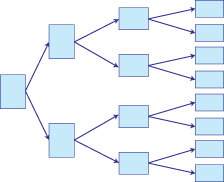Persona+Scenario_Peter Smith
Persona 4
Peter Smith, age 52 -- Senior Consultant
Peter Smith works in California Software,
Peter spent 28 years in information industry, within a background in implementing migration or SOA integration projects in Midrange/Mainframe environments. He is a person with "can do" attitude and willingness to work through and help clients. In the weekend, he love to do a little golf or fishing. He plans for family trips in different spots around the world every year.
Peter is a 52-year-old daddy with two children. Justin goes to
He only reads, views, or accesses high-quality media like CNN, PBS, BBC, New York Times, Washington Post, or Business Week in his daily life. He is also an early adopter for most
He subscribes several blogs and web sites with RSS FeedReader. He loves the automatically subscribe system because he could update information very quick. The reason why he goes to TheyOwn.net is that he wants to participate in discussion about social justice. Peter believes that people could improve the media content, transfer the media system and expand the communications rights of ordinary people through grassroots organizing, education, networking and advocacy.
Scenario:
Peter is a frequent user of TheyOwn.net. Averagely speaking, he accesses TheyOwn.net two times a week. The first connection between TheyOwn.net and peter was because he attended a public hearing on Orange County Community Library which was held by Voice of Orange County FM 93.7 and TheyOwn.net. Peter and other parents had a great discussion of how the media ownership effect media contents to our children. After that hearing, he started to become familiar with the media ownership issue and surfs relevant websites often.
Peter uses RSS FeedReader 3.0 to subscribe new information on TheyOwn.net. He always reads articles on TheyOwn.net in a lovely sunny Sunday afternoon. He scans through the titles and finds if there is anything interests him. If he finds some, he will click the links to TheyOwn.net and find more related details. He considers that an engineer should not only talk to machines everyday but also communicate with different opinions from different aspects. Social network form the Internet could help him know people who care this issue. That is why sometimes he posts some comments for certain topics he wants to discuss with.
Because Peter wants to be an active user, sometimes he will attend some events held by TheyOwn.net. He thinks these participances carry out his concerns to the community.
Labels: Class


